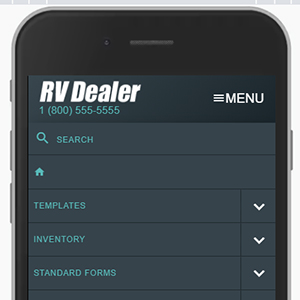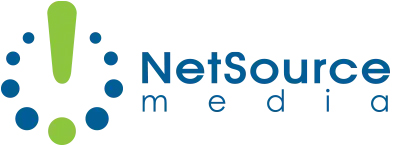Periodic Website Updates Are Good Though, Right?
There are many different opinions about how often to make website updates. However, we like to keep things as simple as possible. Website updates are a good thing…as long as they are done properly and with purpose. So, how often should you update the website? The answer is pretty simple: as often as it needs.
What is considered a moderate to major website update?
- Rebranding
- Seasonal advertising changes
- Advertising a major event or sale
- Changes to inventory types, brands, or services offered
- Changes in staff (if they’re featured on your site)
- General outdated information or design features
- Market trend shift affecting search terms used by leads
Every Website is Different
Small website updates such as changing business hours, phone numbers, or email addresses are not as likely to have a negative impact or break your website as other changes might. But how do you know before making a change if it will cause an issue other or not? Simply put, you probably can’t. Not without a good amount of experience working on websites anyway. For more prominent changes, it will depend on individual business necessity. A website may need to be updated often- weekly, monthly, etc.

Just be sure, if you are making any changes, they’re done correctly and by necessity. Too frequent website updates or changes increase the likelihood of hurting your website.
Editing A Website Correctly
Most dealers and outdoor businesses have a website that includes a back–end Content Management System, or CMS. This is where changes and updates can be made to the site. Some content management systems are user friendly, even for the novice computer person, making editing your site seem like no big deal. But there is a lot more to making website updates than just editing the text box or uploading a new image. Each update made only increases the chances you could break your website. So, what types of changes can have a negative impact on your website?
Mobile or Desktop, That is the Question
When making any changes to a website, the first question should always be, “Does this change go along with best practices for making website edits?”
The second question should be, “How will this look on a mobile device?”
More and more website traffic visiting dealer websites do so from mobile devices.

Web Traffic Facts
According to our internal research of websites managed with NetSource, over half of all traffic visits dealer websites from mobile. It’s vital that your dealership website be easy to read and move through for mobile users. Graphics with text or brightly colored fonts are two examples of things that may look great on desktop but are near impossible to read on a mobile device. While they may not break a website, they will keep web traffic from staying on your dealership website. If your web leads can’t read your website, they’re going to leave for your competitors.
Photos or Graphics
When adding, removing, or replacing photos or graphics during website updates, size and image ratio matters! Whether it be a banner on the home page, images within the text, or background images, file size and image ratio are important. All image placeholders have a specific size ratio “sweet spot” that your web designer created to fit within the parameters of the CMS’ abilities and to prevent content layout shift issues (or CLS for short).
When you upload an image to your site that’s too small, it could be blurry or just not large enough to take up the ratio space intended for that space. If the file size is too large, or the wrong ratio, it can cause issues with page speed, loading time, and could push other information out of place…or out of frame completely. When images take too long to load, they cause CLS problems. Should your page be running too slowly, or not loading properly, search engines like Google will even de-index the page. This means it will no longer show up in Google search results.
Content and Text
A high-quality website designer’s job isn’t to just create a website that looks good. They’re also often working with a team of content creators. These specialists have researched your market trends, competitors, keywords most often found on, and other relevant data. This information is compiled and used as a strategy to create search engine optimized text throughout your dealership website. This content will include key words and phrases that help your website show up at the top of the results page by search engines, such as Google. SEO content on any website should be evaluated periodically. However, SEO website updates should only be made if the current content is no longer relevant to search terms related to your industry.

Navigation Bar
Have a new service, location, or just something new to say online that warrants its own page? Are you looking to add your blog to your website’s navigation? While those tasks might sound simple, if not done correctly, you can make navigating the website difficult for your users. The organization of your navigation should be intuitive for your web traffic. They should move through your site easily and relatively quickly.
You could be moving a top visited page out of its usual place, causing your website visitors to become confused, or miss it all together. When website visitors don’t find what they need quickly, they leave quickly. This causes your bounce rate to skyrocket. When search engines like Google see visitors come to your page and leave very quickly, they assume the content isn’t relevant or engaging, and that can affect your searchability.
Landing Pages
Using landing pages can be useful and they’re recommended by our marketing professionals for many things! Want to showcase a sale? How about introducing a new manufacturer? Looking to funnel your social media ad traffic through specific information? A landing page will provide just what you need. However, there is more than just design that goes into creating a new page for your dealer website. Just like each individual aspect on other pages are put together strategically, your new page should be too. In addition, you may or may not want your landing page to show up in your website’s navigation or site map.
If landing pages aren’t created with proper content that is recognizably related to the content it was advertised with, people could leave the page quickly. Bounce rate is measured by search engines like Google. Increasing bounce rate to the point where search engines do not recognize your site as valuable could break your website.
It Boils Down to Quality Website Updates
Updating your dealer website is not an issue, as long as it’s done properly and with a purpose. Our clients are constantly making updates, upgrades, and industry-relevant changes. From holiday specials to seasonal graphics, to entire website overhauls…the team at NetSource does it all! And we always double check our work. So be sure to double check your work after making any website content changes! Researching SEO key words or phrases, checking loading time/page speed, and confirming content renders properly on all computers, tablets, and mobile devices, are only a few things on our updates check list – to ensure website updates are making a positive impact!

